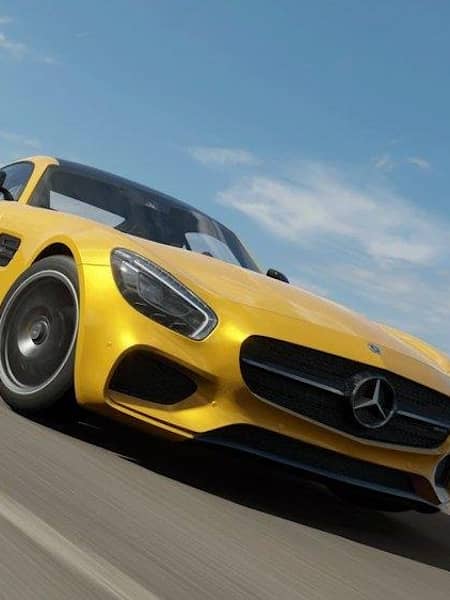Tuning in Forza Horizon 4 is an important part of the game to learn if you want to squeeze every last bit of performance from your cars. Here's a guide on how to get to grips with tuning your rides.
Tyres
Getting the optimum set-up for the tyres is crucial for having plenty of grip in the corners and when accelerating away from the start line. Lower tyre pressures allow the tyres to heat up quickly and can affect the overall responsiveness of the car. Increasing the pressure can lead to a small increase in top speed and responsiveness, but the tyres are more likely to suddenly lose grip. Make sure to experiment with tyre pressures to find a good compromise.
Transmission
Transmission tuning can be unlocked when installing a Race or Sport transmission upgrade to your car. Tuning the final drive of the car is a simple and effective way of choosing a compromise between the top speed and acceleration of the car. A higher final drive will give your car impressive acceleration levels, but it can cause the car to bottom out, meaning it probably won't have good top speed.
A lower final drive will increase the top speed of the car, but can lead to sluggish acceleration. If you want to perfect your transmission, adjusting each gear ratio is the ultimate way to extract the best performance from the car. It's important to reach a balance between a high top speed and quick acceleration.
Alignment
Like tyre pressure, the alignment of the wheels affects the grip when driving in a straight line, or when you're cornering. Negative camber reduces understeer and increases grip in the corners, but can make the car unstable in a straight line. Positive camber decreases oversteer, but also makes the car unstable.
It's best to start with a small amount of positive and negative camber, so that the tyres are aligned equally, and then fine tune the cambers to reach your optimum set-up.
Changing Toe often leads to the car becoming more responsive upon corner entry. Toe-in increases overall stability of the car, but can decrease the responsiveness when turning into a corner. Toe-out increases the responsiveness when turning into a corner, but causes the car to become unstable. It's best to avoid maximum toe-in and toe-out in order to keep tyre wear levels at a reasonable level.
Tweaking the caster angle increases straight-line stability – a perfect adjustment to make for high-speed supercars. A high caster angle enables you to run less negative camber, which will give the car better acceleration and braking. Having a low caster angle means you may want to increase the negative camber to get a reasonable level of grip, otherwise the car will be very unstable.
Anti-roll bars
Anti-roll bars provide extra stability in the corners and reduce the amount of body roll when cornering. A good balance is important to find, because a poorly tuned anti-roll bar can heavily impact the handling of the car.
Increasing the rear anti-roll bar stiffness will increase the levels of oversteer. If the rear anti-roll bar is too stiff, though, it can cause the wheels to lift off the ground when cornering hard, which can result in a pretty spectacular accident. Making the rear-anti-roll bar softer decreases oversteer levels, making the car a bit easier to handle when cornering.
Springs
Making sure you get the right amount of tune on the springs of an off-road vehicle is one of the most important things to do. Spring stiffness controls how the weight of the car is transferred under acceleration, braking and cornering.
Stiff front springs transfer more weight, but if the springs are too stiff, the tyres can lose traction under heavy load. Soft front springs increase the front grip and decrease the level of understeer. Making the springs too stiff will cause the car to bottom out under heavy braking.
Ride height
Not only does adjusting the ride height make your car look rather cool, it also improves the overall handling. A low ride height lowers the centre of gravity and significantly improves the handling. If you lower the car too much however it can cause the car to become uncontrollable.
When tuning, you should lower the ride height as much as possible without the car bottoming out, so it may take some time to perfect your set-up.
Aerodynamics
Increasing downforce levels keeps the car in better contact with the road, heats the tyres quicker and improves the handling. Too much downforce creates an excessive amount of drag, though, which decreases the top speed.
Brakes
As you upgrade your car further, adjusting the brake balance is integral to maximising the performance of the brakes. Changing the balance to the rear of the car increases the oversteer, but decreases stability, whereas moving the balance to the front of the car increases levels of understeer and increases the stability. However, it can also lead to even more understeer under braking.
It's important to find a compromise with the brakes otherwise your braking distances can increase, slowing you down when racing.










